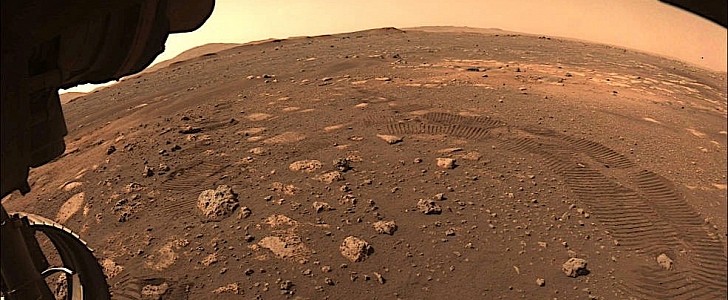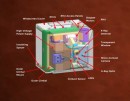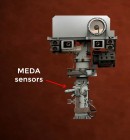It’s been about two weeks now since the Perseverance rover touched down on Mars, and the team running the hardware has just begun testing all of the rover’s systems to see if they work. Last week, it was moving-on-the-Martian-surface time.
On March 4, Perseverance rolled its wheels for the first time in the Jezero crater where it landed. It wasn’t that big of a deal, as it moved for just 21.3 feet (6.5 meters), but that was enough for the crew back on Earth to get a general idea if all systems are a go.
“When it comes to wheeled vehicles on other planets, there are few first-time events that measure up in significance to that of the first drive,” said in a statement Anais Zarifian, Mars 2020 Perseverance rover mobility testbed engineer at NASA’s Jet Propulsion Laboratory in Southern California.
“This was our first chance to ‘kick the tires’ and take Perseverance out for a spin. The rover’s six-wheel drive responded superbly. We are now confident our drive system is good to go, capable of taking us wherever the science leads us over the next two years.”
Perseverance is the size of an average car, measuring 10 feet long (3 meters), 9 feet wide (2.7 meters), and 7 feet tall (2.2 meters). It has six wheels on it, who get their power (like everything else on the rover for that matter) from a Multi-Mission Radioisotope Thermoelectric Generator (MMRTG). This thing turns heat generated by the natural decay of plutonium-238 into electricity.
Despite the fancy equipment and the multi-wheel setup, Perseverance is only capable of moving at low speeds, but will have to do that often as it moves to better position its experiments. NASA says regular commutes of at 656 feet (200 meters) are to be expected.
To give you an idea of how slow this thing is, consider the fact last week’s drive took 33 minutes to complete.
“When it comes to wheeled vehicles on other planets, there are few first-time events that measure up in significance to that of the first drive,” said in a statement Anais Zarifian, Mars 2020 Perseverance rover mobility testbed engineer at NASA’s Jet Propulsion Laboratory in Southern California.
“This was our first chance to ‘kick the tires’ and take Perseverance out for a spin. The rover’s six-wheel drive responded superbly. We are now confident our drive system is good to go, capable of taking us wherever the science leads us over the next two years.”
Perseverance is the size of an average car, measuring 10 feet long (3 meters), 9 feet wide (2.7 meters), and 7 feet tall (2.2 meters). It has six wheels on it, who get their power (like everything else on the rover for that matter) from a Multi-Mission Radioisotope Thermoelectric Generator (MMRTG). This thing turns heat generated by the natural decay of plutonium-238 into electricity.
Despite the fancy equipment and the multi-wheel setup, Perseverance is only capable of moving at low speeds, but will have to do that often as it moves to better position its experiments. NASA says regular commutes of at 656 feet (200 meters) are to be expected.
To give you an idea of how slow this thing is, consider the fact last week’s drive took 33 minutes to complete.












